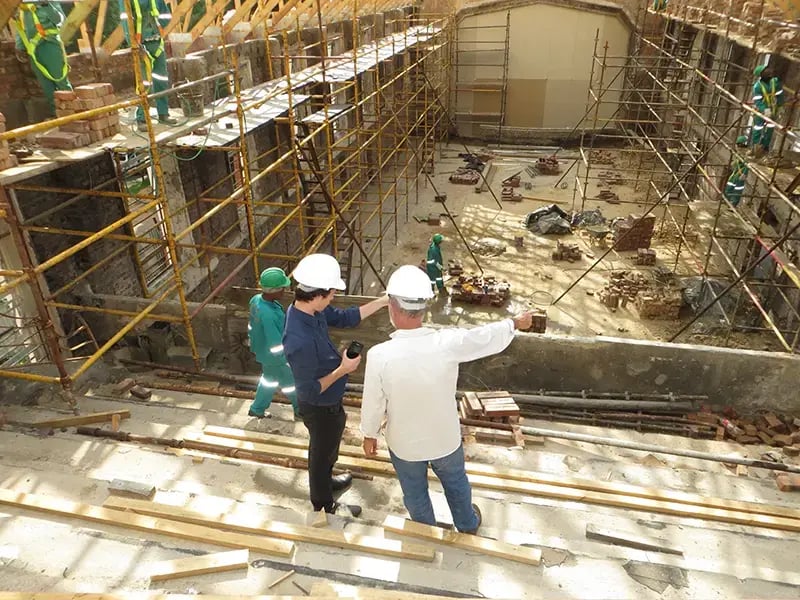Community Infrastructure Levy (CIL) is a well established part of the development landscape, yet it is still frequently misunderstood and, too often, assessed too late. When overlooked at the early stages, CIL can quietly undermine viability, weaken funding conversations and reduce confidence in an otherwise sound scheme.
The reality is that CIL is not a blunt, unavoidable cost. With a clear understanding of local policy, correct administration and early feasibility checks, developers can actively manage and, in some cases, reduce their liability.
This guide sets out what CIL is, who is responsible for paying it, how charges are calculated and five practical strategies developers can use to cut CIL liability and protect scheme viability.
In this guide, we explain what CIL is, who pays it, how much it can cost and, crucially, five practical ways developers can cut CIL liability and protect scheme viability.
Table of Contents
Key Highlights
-
Community Infrastructure Levy can materially affect development viability if it is not assessed early.
-
CIL rates vary significantly between local planning authorities and charging zones, making location a key cost driver.
-
Liability depends on who formally assumes responsibility, and poor timing or admin errors can trigger avoidable charges.
-
Exemptions, instalment policies and Regulation 65 recalculations offer legitimate routes to reduce liability.
-
Tools like LandFund help developers model CIL accurately and produce lender ready appraisals from the outset.
What Is Community Infrastructure Levy?
The Community Infrastructure Levy (CIL) is a charge that local planning authorities (LPAs) can apply to new development to help fund local infrastructure such as transport, schools and healthcare.
CIL is usually charged per square metre of new floorspace and is calculated using locally set rates published in each authority’s charging schedule, alongside information in their Infrastructure Funding Statement (IFS).
“The Community Infrastructure Levy is a charge which local authorities can choose to levy on new development. The charges are based on the size and type of the new development.” - GOV.UK
How Much Is Community Infrastructure Levy?
There is no single CIL rate. Charges vary significantly between LPAs and often within them, depending on use class, development type and geographic charging zone.
For developers, this variation matters. A scheme that looks viable on paper in one authority can carry a materially higher CIL burden just across the boundary. That difference can affect land value, funding terms and overall returns.
This is why CIL should be assessed alongside other early feasibility inputs such as planning constraints, land value and build costs. Location decisions are not just about policy risk; they are about cost exposure.
Who Pays Community Infrastructure Levy?
CIL liability sits with whoever has assumed liability for the development. In practice, this is often the developer, but it can be transferred or shared between landowners, option holders and development partners.
What matters most is timing and clarity. Submitting the Assumption of Liability form at the correct stage ensures the right party is legally responsible for the charge. Get this wrong and liability can default to the landowner or trigger surcharges that were entirely avoidable.
Confirming liability early protects viability and avoids unpleasant surprises after consent.

Changes to Community Infrastructure Levy
The Levelling-up and Regeneration Act 2023 introduced plans to replace CIL with a new Infrastructure Levy.
However, CIL remains firmly in force across most LPAs and will continue to apply for the foreseeable future. For developers, this means one thing: CIL still needs to be modelled accurately, using up to date local data, as part of any credible appraisal.
Ignoring it now on the basis of future reform is a fast route to a funding gap later.
Five Tips to Cut Your CIL Liability
Reducing CIL liability is about foresight, not firefighting. The strategies below help developers improve scheme viability by understanding costs early and avoiding common traps.
The five tips:
-
Be proactive
-
Choose your location wisely
-
Know the CIL exemptions
-
Check for instalment policies
-
Check for Regulation 65 recalculations
1. Be Proactive
CIL should be checked at site selection or pre application stage, not after planning consent lands.
Early CIL checks work best when paired with accurate cost data, allowing developers to understand how levy costs interact with build costs, finance and returns. This is particularly important for lender confidence, where unexplained viability swings raise red flags.
Using accurate cost data early gives developers options rather than surprises.
2. Choose Your Location Wisely
CIL rates can vary dramatically across neighbouring LPAs and even between zones within the same authority.
Comparing CIL alongside land value, planning constraints and infrastructure requirements helps developers understand the true cost of location. A slightly cheaper site can quickly become more expensive once levy rates are factored in.
LandFund allows developers to compare CIL rates across different LPAs, making it easier to see how location decisions impact overall project costs before offers are made.

3. Know the CIL Exemptions
Not all development is treated equally under CIL.
Exemptions and reliefs that can materially reduce liability include:
-
Social and affordable housing
-
Self build residential development
-
Charitable development
-
Certain use class changes and redevelopments
Understanding which exemptions apply, and ensuring the correct paperwork is submitted on time, can significantly reduce or remove liability altogether.
4. Check for Instalment Policies
Some LPAs allow CIL to be paid in instalments rather than as a single upfront charge. Others do not.
Instalment policies vary by authority and are set out in the local charging schedule. Checking these early helps developers model cash flow accurately and avoid late payment surcharges that can quickly add up.
5. Check for Regulation 65 Recalculations
Regulation 65 allows CIL liability to be recalculated where errors have been made.
Developers should review liability notices carefully to identify mistakes in floorspace calculations, use class assumptions or applicable rates. Where errors exist, a recalculation can reduce the amount payable, provided it is addressed promptly.
This is often overlooked and can represent one of the fastest ways to cut liability post consent.
Common CIL Mistakes to Make
Many CIL costs increase unnecessarily due to avoidable admin errors:
-
Starting development before CIL paperwork is validated, triggering surcharges
-
Failing to submit required forms, even where exemptions apply
-
Submitting CIL forms in the wrong order
-
Missing Assumption of Liability deadlines
-
Relying on outdated charging schedules
Avoiding these mistakes is often the difference between a manageable levy and an inflated one.
FAQs
What does CIL liable mean?
Being CIL liable means you are the legally responsible party required to pay the Community Infrastructure Levy for a development. Liability is confirmed through formal notices and applies once planning permission is granted, unless a valid exemption or relief removes the charge.
What is the assumption of liability for CIL?
The Assumption of Liability is a formal notice submitted to the LPA confirming who will pay CIL. It must be submitted before development starts to ensure liability sits with the correct party and to avoid default charges or penalties.
What happens if CIL is not paid?
If CIL is not paid on time, LPAs can apply surcharges, stop notices and, in some cases, pursue enforcement action. Late or missed payments can significantly increase overall costs and delay development.
Can you negotiate CIL?
CIL rates themselves are non negotiable, but liability can be reduced through exemptions, reliefs, instalment policies and Regulation 65 recalculations. The key is understanding the rules early and applying them correctly.
How LandFund Can Help
Early, informed CIL assessment is essential for protecting viability, avoiding unexpected costs and producing lender ready appraisals.
LandFund helps developers instantly calculate CIL liability using accurate, up-to-date LPA data, assess exemption eligibility and understand the impact on cash flow and returns. Using the LandFund appraisal tool, developers can build appraisals and share them in seconds, giving teams and funders confidence from the outset.
Try LandFund to instantly calculate your CIL liability, assess exemption eligibility and understand the impact on cash flow and project returns.
Want to learn more?
Find out more about how our appraisal tool can help streamline your development finance process.
Request a demo
